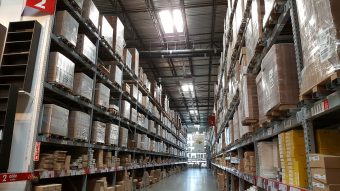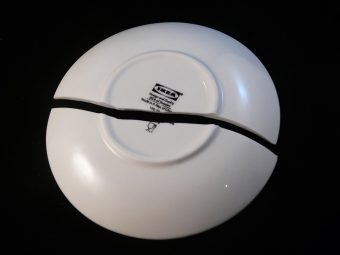
In some ways there is nothing new about buying second-hand furniture – antique stores have done it for centuries.
And yet the idea that a leading modern furniture shop – IKEA in Sydney, to be precise – will re-sell old furniture seems radical.
This demonstrates how much work still needs to be done in order to shift the attitude of both consumers and companies towards embracing a circular economy, rather than a linear one.
The circular economy is based on the principle that nothing useful should go to waste, whereas the linear model disposes of things when they are no longer needed.
IKEA is an example of a company which is prioritising the move to a circular economy, winning this year’s Accenture Strategy Award for Circular Economy, part of the major new awards developed by the World Economic Forum and the Forum of Young Global Leaders.
And the new initiative in Sydney is part of this.
Vouchers for broken goods

More than half of Australians have thrown out furniture in the last 12 months, with coffee tables, sofas and chairs topping the list of things which have ended up in landfill.
IKEA estimates that 13.5 million pieces of furniture could have been recycled, reused or repaired and given new life, according to its People & Planet positive 2018 report.
The biggest cause of furniture being thrown away was that it was broken, with one in four Australians saying they don’t know how to repair goods.
However, 34% of Australians said they would be happy to buy second hand furniture.
The led IKEA to see the market for repairing and re-selling their own furniture.
How it works
Customers email photos of their old IKEA furniture so that it can be assessed for recyclability. They can then drop off their used or broken IKEA furniture at the store, without even taking it apart, receiving a voucher for the value of the old furniture in return.
In a similar scheme in Japan, more than 3,500 items were sold back to IKEA within the first year.
Precious resources
The take-back scheme means that the lifecycle of IKEA furniture will be moving in a loop rather rather than in a straight line that ends in landfill.
As the world’s population grows, re-using resources will become ever more critical.
And although the move away from a throw-away culture is gaining momentum, there is still a long way to go. Only 9% of the world’s plastics are being recycled and reused, for example.
“If the last decades were about mass consumerism, now we are getting towards mass circularity,” said IKEA’s Chief Executive Jesper Brodin at the World Economic Forum Annual Meeting in Davos in 2018.
A furniture retailer choosing to re-sell and re-use its own waste products is one step along that journey.
Source: World Economic Forum



